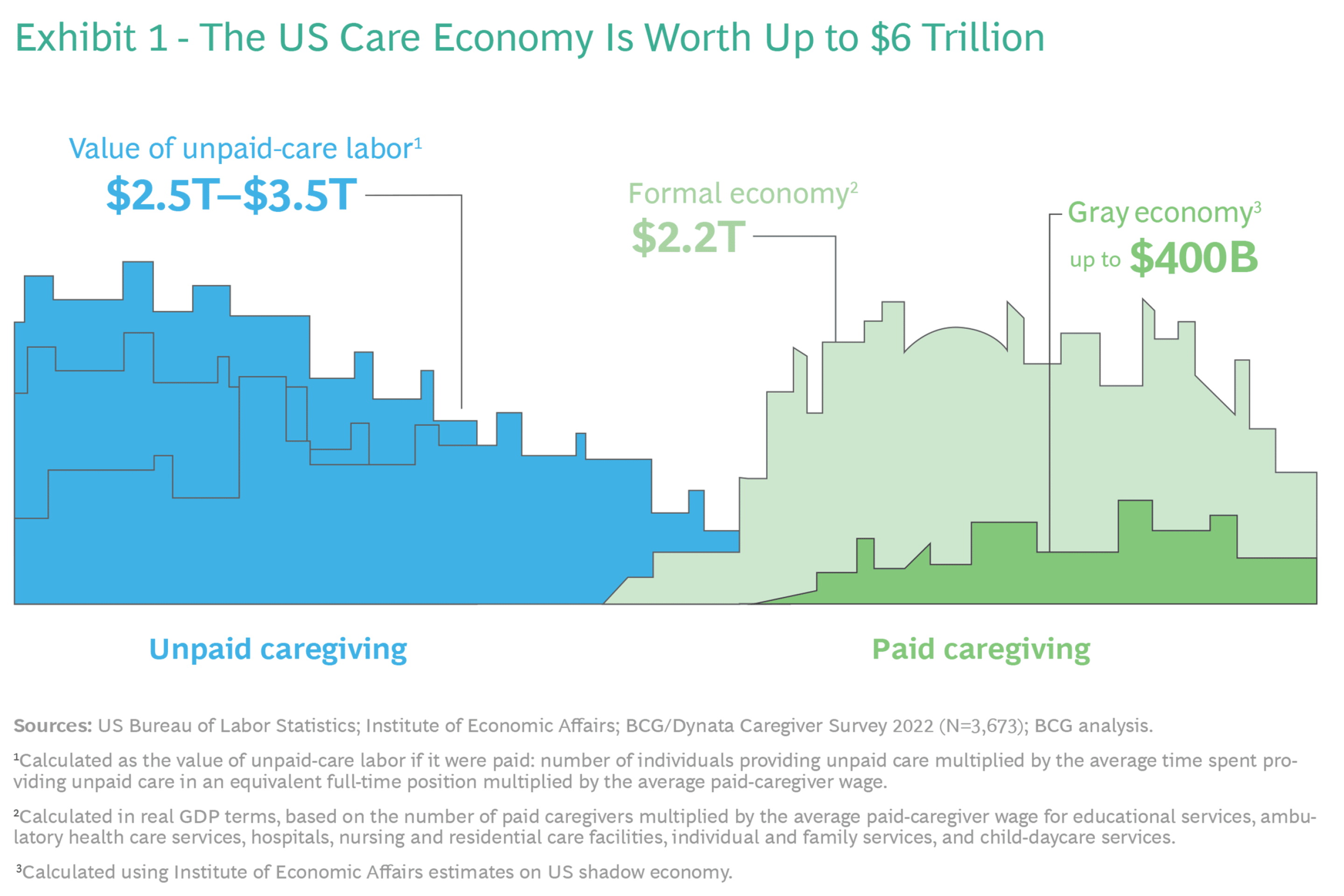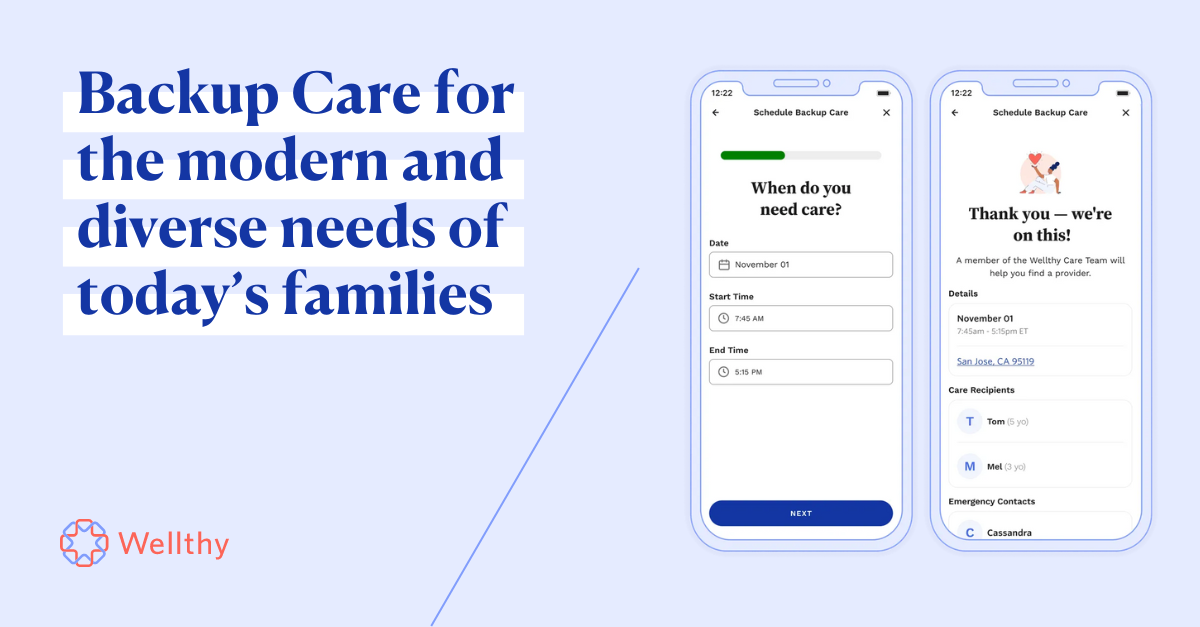We’ve made it our mission here at Wellthy to uplift and unburden family caregivers from the complex logistics of care, and we always look to share the latest information on the caregiving crisis.
New data and recent trends in the care economy have brought startling clarity to the scope and impact of the caregiving crisis, and we’re sounding the alarm again.
The caregiving crisis is a threat to our entire U.S. labor force, impacting employers’ ability to recruit and retain quality talent if we don’t take action soon.
What does the care landscape look like in 2023?

A recent BCG study estimates the size of the U.S. care economy at $6T. And over half of that value is driven by unpaid care labor and family caregivers. In fact, BCG estimates that 90 million people (or 56% of working adults) contribute unpaid care labor to loved ones, on top of their full-time jobs.
On the other side of the care economy, we’re currently experiencing a nationwide shortage of paid care workers. There are more than 1.8 million unfilled jobs across the entire paid care economy right now, including nursing assistants, home health aides, childcare workers, and many more occupations.
These paid care shortages, combined with a growing demand for family caregivers, means we’re facing a widening care gap — one that is expected to grow over the next ten years.
What does this mean for employers?
We’re already seeing significant issues due to the care gap, and will continue to see a profound ripple effect across our entire economy.
Nearly half of unpaid family caregivers rely on the help of paid care (ie childcare, in-home caregivers, living facilities, etc) so that they can go to work. And when their paid care support falls through, or when they can’t find the care they need, they have no choice but to step in and fill that role themselves. Paid care shortages are putting more and more employees at risk of missing work and even stepping out of the workforce.
"For every ten unfilled paid care roles, one full-time worker exits the workforce in another part of the economy."
For employers, the cost of inaction is high. The ability to achieve company goals is heavily impacted by widespread recruitment and retention challenges, troubling DEI setbacks, and absenteeism and productivity issues.
With estimates suggesting that our economy could lose $290 billion per year starting in 2030 due to the care gap, it’s clear that employers need to take notice.
Employers can make a difference
While employers can’t solve the care crisis on their own, the good news is that there are meaningful ways they can support caregivers in their workplace — from flexible work policies, to offering a variety of leave types, and providing access to services like Wellthy that alleviate the administrative burdens of care and help employees plan ahead for future needs.
By taking steps like these now, organizations can help employees juggle the demands of work and care, retain their critical talent, build loyalty, and positively impact the bottom line.
To learn more about how Wellthy helps support and retain talent, request a demo.







